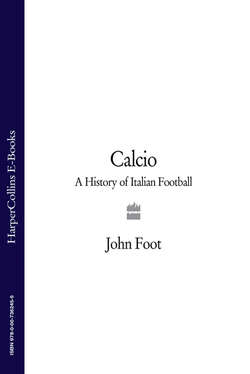Читать книгу Calcio: A History of Italian Football - John Foot - Страница 59
CHAPTER 4 Teams and Cities: Milan, Rome, Genoa, Florence, Naples Milan. Moral Capital and Football Capital
ОглавлениеFor the whole of the 1960s, the world’s football capital was Milan. AC Milan and Internazionale had each won two European Cups in that decade, whilst Inter also lost another final. Domestically, the two Milanese clubs dominated the championship. Inter won three scudetti, and came second four times in ten years, Milan came first twice, and second twice. The ‘moral capital’ was also the key city in Italy in the 1960s. As the nation went through an unprecedented period of development and growth – the ‘economic miracle’ – Milan was the powerhouse of the ‘great transformation’. Hundreds of thousands of Italian immigrants flooded into the city, finding work in the vast factories on the urban fringe – Alfa Romeo, Innocenti (who made the Lambretta scooter), Pirelli, Zanussi.
Despite the many stories in circulation, we still have no clear idea as to the reasons behind support for Milan or Inter, who have played in the same stadium since the 1940s.1 Legend has it that Inter fans were originally more well-to-do, whilst Milan fans were drawn from the city’s large industrial working class. There is no evidence to support this claim, and research on the contemporary fan-bases of the two clubs has found little social difference between them. Politics is also not a dividing characteristic – Inter have a hard-core of right-wing fans, but many left-wing supporters. Milan’s curva has never ceded to the right, whilst their president and owner, Silvio Berlusconi, is certainly not on the left. There are no Inter and Milan zones in the city. Support was more a question of the family into which you were born – and when you were born. Inter became very popular during the period of the Great Inter in the 1950s and 1960s, Milan recruited millions of new fans during its triumphal 1990s.
